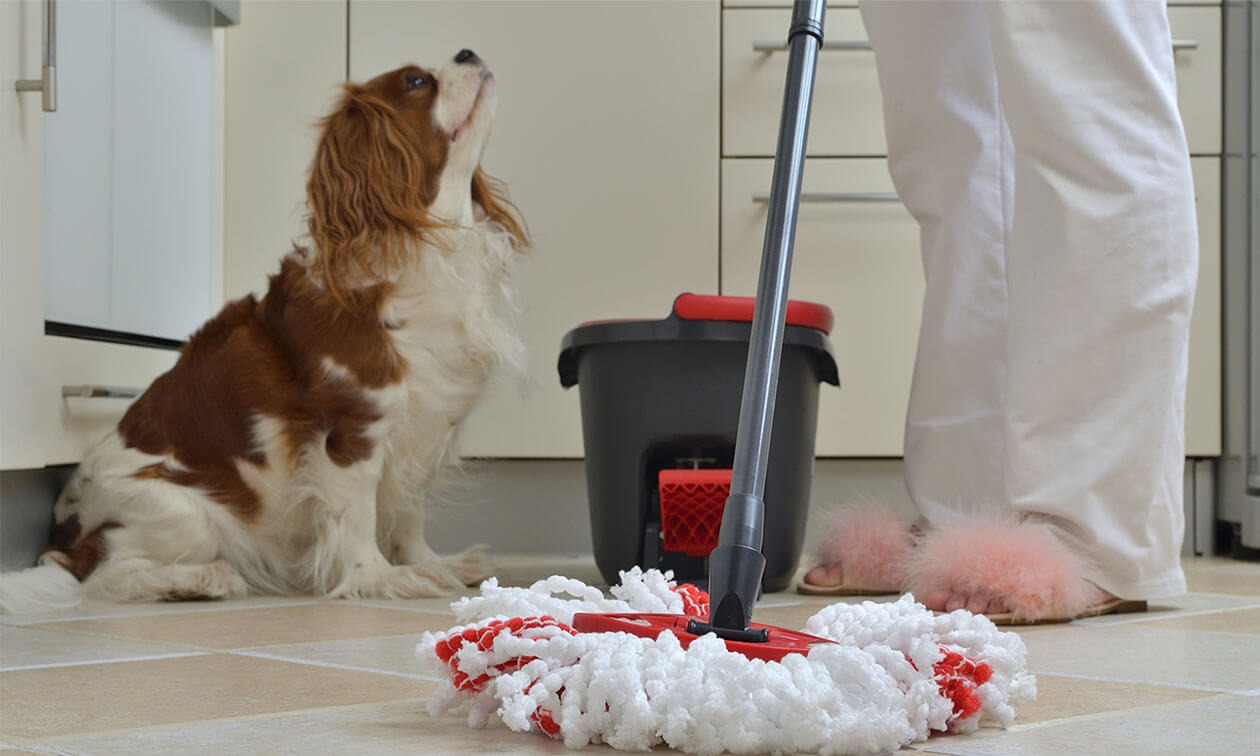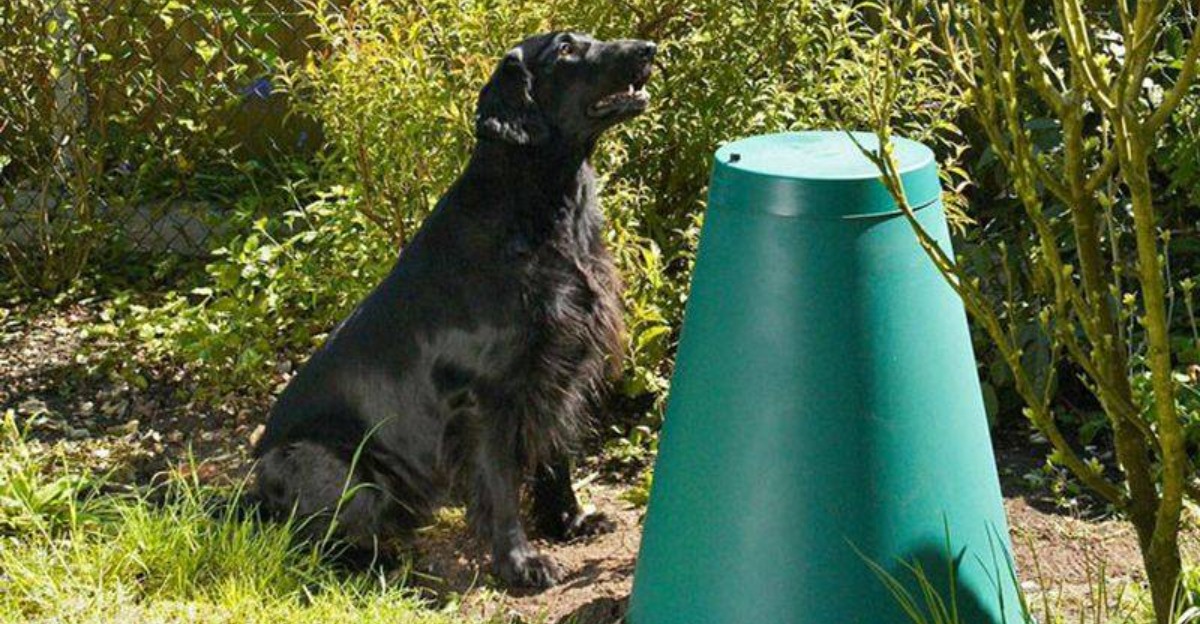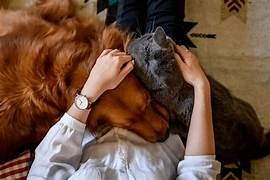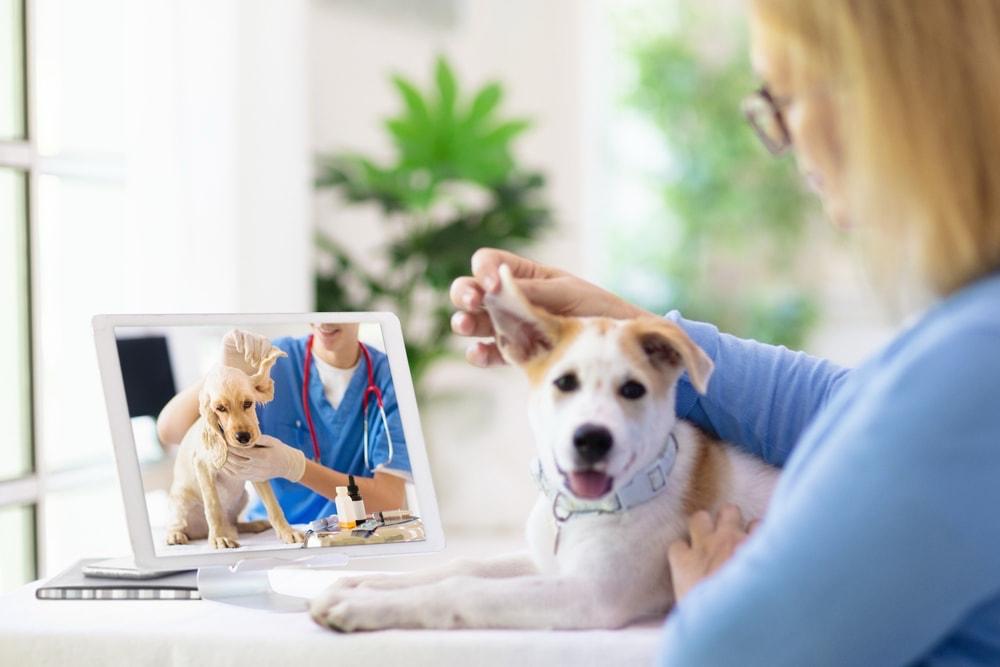
Pet-safe cleaning agents: how common household cleaners affect animal health.
“Understanding the hidden dangers of everyday household cleaning products for pets, this guide explores how chemicals like bleach, ammonia, phenols, and essential oils affect animal health, highlights species-specific sensitivities, identifies symptoms of poisoning, and offers practical pet-safe alternatives and preventive measures, helping pet owners maintain a clean, hygienic home while ensuring the safety and well-being of their furry, feathered, or small companions.”
🐶 Pet Star
49 min read · 3, Oct 2025

Introduction
Pets are not just animals; they are family members who share our homes, our spaces, and sometimes even our beds. With their curious noses, paw-licking habits, and tendency to explore every corner, they are much more vulnerable to the substances we use daily to clean our homes. While cleaning is essential for hygiene and preventing disease, many household cleaning agents contain toxic chemicals that can severely affect animal health. What may seem like a harmless disinfectant, floor cleaner, or air freshener to us may be dangerous, or even fatal, to cats, dogs, birds, and small mammals.
This article explores the risks of common household cleaners, the specific chemicals harmful to pets, signs of poisoning, safe alternatives, and guidelines for maintaining a clean yet pet-safe home.
How Household Cleaners Affect Pets
Most household cleaning agents are designed for human use, but pets interact with their environment differently. Dogs lick floors, cats groom their fur after walking on freshly mopped surfaces, and birds inhale airborne particles more intensely due to their highly efficient respiratory systems. These behaviors increase exposure risks, turning ordinary cleaning into a potential health hazard.
Key Routes of Exposure:
- Ingestion – Pets licking floors, chewing bottles, or grooming themselves after walking through cleaner residue.
- Inhalation – Breathing in fumes from sprays, aerosols, or heavily scented cleaning solutions.
- Dermal Absorption – Contact of chemicals with paw pads or skin.
Common Cleaning Agents and Their Risks
1. Bleach (Sodium Hypochlorite)
- Where it’s found: Bathroom cleaners, disinfectants, laundry whiteners.
- Risks: Causes drooling, vomiting, burns to the mouth/esophagus, difficulty breathing (when inhaled). Strong fumes can irritate bird lungs.
- Particularly dangerous when mixed: Combining bleach with ammonia or vinegar produces deadly gases.
2. Ammonia
- Where it’s found: Window cleaners, oven cleaners, floor cleaners.
- Risks: Irritates mucous membranes, can cause eye/skin burns, vomiting, and respiratory distress. Birds are especially sensitive to ammonia vapors.
3. Phenols
- Where it’s found: Disinfectants, pine-scented cleaners, and antiseptic sprays.
- Risks: Cats cannot metabolize phenols effectively, making them particularly vulnerable. Exposure can cause liver failure, tremors, seizures, or death.
4. Formaldehyde
- Where it’s found: Certain carpet cleaners, disinfectants, air fresheners.
- Risks: Carcinogenic to humans and toxic to pets. Can cause eye irritation, coughing, vomiting, and long-term organ damage.
5. Glycol Ethers
- Where it’s found: Glass cleaners, spot removers, carpet cleaners.
- Risks: Linked to anemia, reproductive issues, and kidney/liver damage in pets.
6. Quaternary Ammonium Compounds (Quats)
- Where it’s found: Antibacterial sprays, disinfectant wipes, fabric softeners.
- Risks: Can cause oral burns, vomiting, drooling, respiratory problems, and in severe cases, neurological damage.
7. Essential Oils (Undiluted)
- Where it’s found: Natural cleaning agents, diffusers.
- Risks: While marketed as safe, some oils (tea tree, eucalyptus, citrus, pine, peppermint) are toxic to pets, especially cats, leading to tremors, liver damage, or respiratory failure.
Species-Specific Sensitivities
Cats
- Cats lack certain liver enzymes to process chemicals, making them highly sensitive to phenols, essential oils, and certain disinfectants.
- Even small residues can be dangerous because of their meticulous grooming.
Dogs
- More likely to ingest cleaners accidentally due to their chewing behavior.
- Larger body mass sometimes means higher tolerance, but ingestion of concentrated chemicals (like bleach) is often fatal.
Birds
- Extremely sensitive respiratory systems.
- Even mild fumes (air fresheners, scented candles, sprays) can cause respiratory distress or death.
Small Mammals (Rabbits, Guinea Pigs, Hamsters)
- Fragile digestive and respiratory systems.
- Exposure can lead to GI stasis, respiratory illness, or fatal toxicity.
Symptoms of Cleaning Product Poisoning in Pets
- Excessive drooling or foaming at the mouth
- Pawing at the face or mouth
- Vomiting or diarrhea
- Lethargy, tremors, or seizures
- Difficulty breathing or coughing
- Burns or redness on paws, mouth, or skin
- Sudden collapse or unconsciousness (in severe cases)
Immediate Action: If you suspect poisoning, do not induce vomiting unless directed by a vet. Rinse the affected area with clean water and contact a veterinarian or pet poison hotline immediately.
Pet-Safe Cleaning Alternatives
Homemade Solutions
- White Vinegar – Cuts grease, disinfects, and neutralizes odors. Safe for diluted use (avoid excessive exposure for cats sensitive to the smell).
- Baking Soda – Deodorizes carpets, litter boxes, and can be used as a gentle abrasive.
- Lemon Juice – Works as a mild antibacterial and deodorizer (use sparingly, avoid direct pet contact).
- Castile Soap – Plant-based soap, safe for multipurpose cleaning when diluted.
- Hydrogen Peroxide (3%) – Effective disinfectant for surfaces (but never use on pets directly without vet approval).
Commercial Pet-Safe Cleaners
- Look for labels that explicitly say “pet-safe” or “non-toxic to animals.”
- Brands like Seventh Generation, Method, and specialized pet-safe cleaners are designed to minimize chemical risks.
- Always rinse thoroughly to prevent residue buildup.
Tips for Safe Cleaning with Pets
- Keep pets away during cleaning – Close them in another room until surfaces are dry.
- Avoid aerosols and sprays – Use wipes or damp cloths to reduce airborne exposure.
- Store cleaners securely – Out of reach, ideally in locked cabinets.
- Rinse thoroughly – Especially floors, counters, and litter boxes.
- Ventilate – Open windows and use fans to disperse fumes.
- Educate family members – Ensure everyone in the household knows which products are unsafe for pets.
Case Studies and Real-Life Incidents
- Case 1: Cat with Phenol Toxicity
- A cat owner used a pine-scented disinfectant to mop the floor. Within hours, the cat developed drooling, weakness, and seizures. Despite veterinary intervention, the cat died of acute liver failure.
- Case 2: Dog and Bleach Exposure
- A Labrador retriever ingested diluted bleach from a mop bucket. The dog suffered esophageal burns and required weeks of supportive care, including IV fluids and pain management, but survived.
- Case 3: Parrot and Air Freshener
- A parrot exposed to aerosol air freshener developed immediate respiratory distress. Despite emergency treatment, the bird did not survive due to severe lung damage.
These tragic examples highlight the importance of awareness and prevention.
When it comes to keeping our homes clean, shiny, and germ-free, many people rely on common household cleaning products without giving much thought to how these substances might affect their pets, but the reality is that animals live much closer to the ground, explore their environments with their tongues, noses, and paws, and are far more vulnerable to toxic exposure than humans. The very cleaners we trust to protect our health often contain chemicals that can harm, sicken, or even kill dogs, cats, birds, rabbits, and other companion animals. Understanding the dangers of these products, the symptoms of poisoning, and safe alternatives is essential for any responsible pet owner. One of the most widely used but most dangerous cleaners is bleach, or sodium hypochlorite, commonly found in laundry whiteners and bathroom disinfectants; while effective at killing bacteria, even diluted bleach can cause severe burns in a pet’s mouth, throat, and stomach if ingested, and its fumes can irritate the lungs of sensitive species like birds. Mixing bleach with other cleaners, such as ammonia or vinegar, produces deadly gases that can endanger both humans and pets. Ammonia itself, present in oven and window cleaners, is equally hazardous, causing respiratory distress, eye irritation, and even chemical burns on paw pads if a pet walks through a freshly cleaned surface. Phenols, another group of toxic chemicals often used in pine-scented or antiseptic cleaners, pose a particular threat to cats because they lack the liver enzymes needed to break them down, leading to tremors, seizures, or liver failure even from small exposures. Formaldehyde, still found in some carpet cleaners and air fresheners, adds another layer of risk as it is not only carcinogenic but also capable of causing vomiting, coughing, and long-term organ damage. Glycol ethers, often used in glass or carpet cleaners, have been linked to anemia, reproductive issues, and kidney damage, while quaternary ammonium compounds (“quats”), which appear in antibacterial sprays and disinfectant wipes, can cause oral burns, drooling, vomiting, and in severe cases neurological damage. Even products marketed as “natural,” like essential oils, are not automatically safe, as oils such as tea tree, eucalyptus, pine, peppermint, and citrus are toxic to cats and dogs, potentially leading to liver damage, tremors, or respiratory failure. Species-specific vulnerabilities complicate matters further: cats, with their meticulous grooming habits and unique metabolic weaknesses, are highly sensitive to even minute residues; dogs, though generally more robust, are prone to chewing bottles, drinking from mop buckets, or licking freshly mopped floors, leading to accidental poisoning; birds, with their delicate respiratory systems, are perhaps the most vulnerable, as even mild fumes from scented candles, air fresheners, or sprays can be lethal; and small mammals like rabbits, hamsters, and guinea pigs have fragile digestive and respiratory systems that make them easily affected by residues and fumes. Recognizing symptoms of poisoning is crucial for timely intervention—warning signs include excessive drooling, foaming at the mouth, pawing at the face, vomiting, diarrhea, lethargy, tremors, seizures, coughing, difficulty breathing, or visible burns on paws and skin. In severe cases, collapse or sudden unconsciousness may occur. If poisoning is suspected, owners should never induce vomiting unless specifically instructed by a veterinarian; instead, rinsing the affected area with water and seeking immediate professional help is critical. Preventing such incidents means embracing safer alternatives and adjusting cleaning habits. Homemade solutions like white vinegar, baking soda, lemon juice, castile soap, and diluted hydrogen peroxide can replace many chemical cleaners; vinegar disinfects and neutralizes odors, baking soda deodorizes and scrubs, lemon juice works as a mild antibacterial, castile soap cleans naturally, and hydrogen peroxide (3%) disinfects surfaces effectively. Commercial pet-safe cleaners are also available, but labels should always be checked for certifications, and thorough rinsing of cleaned surfaces remains essential. To further protect pets, owners should keep them away during cleaning, avoid sprays and aerosols, store cleaners securely, rinse surfaces carefully, ventilate rooms, and ensure everyone in the household understands which products are unsafe. Real-life cases highlight the risks: a cat exposed to a pine-scented cleaner developed seizures and died of acute liver failure; a Labrador retriever that ingested mop water with bleach suffered esophageal burns and required weeks of veterinary care but survived; a parrot exposed to air freshener spray suffered immediate respiratory distress and did not survive despite treatment. These tragic examples emphasize the need for awareness and preventive measures. Ultimately, the goal is to maintain a clean and healthy home environment without compromising the well-being of pets, which is entirely possible through informed product choices, vigilance, and safer cleaning practices. In summary, household cleaners containing bleach, ammonia, phenols, quats, and formaldehyde are highly dangerous to pets, especially cats, birds, and small mammals, and even natural products like essential oils can be harmful when misused. By switching to pet-safe alternatives like vinegar, baking soda, and castile soap, keeping animals away from cleaning areas, and being alert to signs of poisoning, pet owners can achieve both cleanliness and safety. A clean home should never come at the expense of animal health, and with mindful practices, it is possible to create an environment that is hygienic, fresh, and entirely pet-friendly.
When it comes to maintaining a clean home, most people focus on hygiene, aesthetics, and odor control without fully considering the impact that household cleaning products can have on their pets, yet the reality is that pets—including cats, dogs, birds, rabbits, and small mammals—interact with their environment in ways that make them far more vulnerable to chemical exposure than humans, as they explore spaces with their noses, tongues, and paws, lick floors, groom their fur, chew objects, and even inhale airborne particles, and the very cleaners we rely on for cleanliness often contain ingredients that are toxic, corrosive, or irritating, with the potential to cause acute poisoning, chronic health issues, or even death depending on the substance, concentration, duration of exposure, and the species affected, with bleach, for example, being one of the most commonly used household disinfectants and whitening agents found in bathroom cleaners, laundry products, and general disinfectants, and although highly effective at killing bacteria and viruses, sodium hypochlorite can cause serious chemical burns to the mouth, esophagus, and stomach if ingested, severe drooling, vomiting, weakness, and even respiratory distress if fumes are inhaled, particularly dangerous when combined with other cleaners such as ammonia or vinegar, producing highly toxic gases; ammonia itself, present in many window, oven, and floor cleaners, can irritate the skin, eyes, and respiratory tract, causing coughing, sneezing, and in severe cases pulmonary edema or chemical burns, with birds being especially sensitive to even low-level vapors due to their highly efficient and fragile respiratory systems; phenolic compounds, frequently found in pine-scented disinfectants and antiseptic sprays, are particularly hazardous to cats, which lack the liver enzymes necessary to metabolize phenols, leading to potential liver failure, tremors, seizures, and fatal outcomes even from minimal exposure, while formaldehyde, present in certain carpet cleaners, disinfectants, and air fresheners, is not only carcinogenic but can also cause eye and throat irritation, vomiting, coughing, and chronic organ damage in pets; glycol ethers, common in glass cleaners, spot removers, and carpet shampoos, have been associated with anemia, liver and kidney damage, and reproductive toxicity in animals, and quaternary ammonium compounds, or “quats,” found in antibacterial sprays, disinfectant wipes, and some fabric softeners, pose risks of oral burns, drooling, vomiting, respiratory distress, and neurological symptoms if ingested or inhaled; even “natural” products such as essential oils, often promoted as safe alternatives, are not without danger, as oils like tea tree, eucalyptus, peppermint, citrus, and pine can cause severe liver damage, tremors, respiratory distress, or death, particularly in cats and smaller pets, emphasizing the need for careful consideration of every chemical or natural agent used in a household; exposure occurs through ingestion, inhalation, or dermal contact, with cats being particularly vulnerable due to their grooming behavior and metabolic limitations, dogs prone to accidental ingestion because of chewing and licking habits, birds extremely sensitive to airborne toxins, and small mammals like rabbits, hamsters, and guinea pigs possessing delicate digestive and respiratory systems, and the clinical signs of poisoning can include drooling, foaming at the mouth, pawing at the face, vomiting, diarrhea, lethargy, tremors, seizures, respiratory difficulty, burns, or collapse, making rapid recognition and immediate veterinary intervention essential, with proper first aid including rinsing affected areas with clean water and contacting a veterinarian or poison control, and never inducing vomiting unless explicitly instructed by a professional, as misuse can exacerbate damage; preventive measures are therefore critical and include keeping pets away from areas being cleaned until surfaces are completely dry, avoiding aerosols and sprays that create airborne particles, storing all cleaners securely in locked cabinets, ventilating rooms to disperse fumes, rinsing surfaces thoroughly to remove chemical residues, and educating all household members about products that are unsafe for pets; alternative cleaning agents that are generally recognized as safe for pets include diluted white vinegar, which acts as a disinfectant and odor neutralizer, baking soda for deodorizing and gentle abrasive cleaning, lemon juice as a mild antibacterial, castile soap for versatile cleaning, and diluted hydrogen peroxide (3%) for surface disinfection, though direct application on pets is never recommended without veterinary guidance; commercial pet-safe cleaners are also available, with brands like Seventh Generation and Method producing products specifically labeled non-toxic to animals, and these, combined with mindful cleaning habits, can significantly reduce risk; real-world incidents illustrate the dangers vividly, such as a cat developing seizures and dying from acute liver failure after exposure to a pine-scented cleaner, a Labrador retriever suffering esophageal burns from ingesting diluted bleach in a mop bucket, and a parrot succumbing to respiratory distress after inhaling air freshener spray, underscoring that even seemingly minor exposures can be fatal; ultimately, the objective is to maintain a hygienic and odor-free home environment while protecting pets from the harmful effects of common cleaning chemicals, which is achievable through the use of non-toxic or homemade cleaners, minimizing direct contact, proper storage, and ventilation, as well as being vigilant about symptoms of chemical exposure and seeking immediate care when necessary, because pets rely entirely on humans to provide a safe living environment, and responsible cleaning practices are integral to their health and longevity, and as more awareness grows about chemical hazards, adopting pet-friendly cleaning routines not only prevents acute poisoning but also reduces long-term health risks, contributing to happier, healthier, and safer homes for all animals, proving that maintaining cleanliness and ensuring animal safety are not mutually exclusive goals but complementary aspects of conscientious pet ownership.
Conclusion
Household cleaning agents are essential for hygiene, but many contain chemicals that can harm pets through ingestion, inhalation, or skin contact. Substances like bleach, ammonia, phenols, and essential oils pose severe risks, with cats, birds, and small mammals being the most vulnerable.
Pet owners should recognize symptoms of poisoning and act immediately in emergencies. Preventing exposure is key—keeping pets away while cleaning, choosing pet-safe products, and adopting natural alternatives like vinegar, baking soda, and castile soap can protect both cleanliness and animal health.
In conclusion: A clean home should not come at the cost of your pet’s health. By making informed choices, pet owners can maintain hygiene while ensuring their furry, feathered, or scaly companions remain safe and healthy.
Q&A Section
Q1 :- What common household cleaners are most toxic to pets?
Ans:- Bleach, ammonia-based cleaners, phenol disinfectants, formaldehyde products, and quaternary ammonium compounds are among the most toxic for pets.
Q2 :- Are natural cleaners like vinegar and baking soda safe for pets?
Ans:- Yes, when used properly and rinsed, vinegar and baking soda are generally safe. However, avoid letting pets directly ingest or walk on wet surfaces before drying.
Q3 :- Why are cats more sensitive to cleaning agents than dogs?
Ans:- Cats lack certain liver enzymes that help metabolize chemicals. They also groom themselves constantly, increasing the chance of ingesting toxins from their fur.
Q4 :- Can essential oils be used safely around pets?
Ans:- Most essential oils, especially tea tree, eucalyptus, pine, and citrus oils, are unsafe for cats and dogs. Use with extreme caution and proper dilution, or avoid entirely.
Q5 :- What should I do if my pet ingests a cleaning product?
Ans:- Do not induce vomiting unless instructed by a vet. Rinse any affected area with clean water and contact a veterinarian or pet poison control immediately.
Similar Articles
Find more relatable content in similar Articles

Composting Pet Waste: A Greener Way to Clean Up...
As pet ownership continues to .. Read More

Pets and Mental Health: The Science Behind Emotional H..
Discover the profound impact o.. Read More

Social Media for Pets: Turning Your Pet into a Digital..
From playful puppies to charis.. Read More

Virtual Vet Visits: Are Online Consultations Reliable?..
As pet healthcare embraces dig.. Read More
Explore Other Categories
© 2024 Copyrights by rPets. All Rights Reserved.